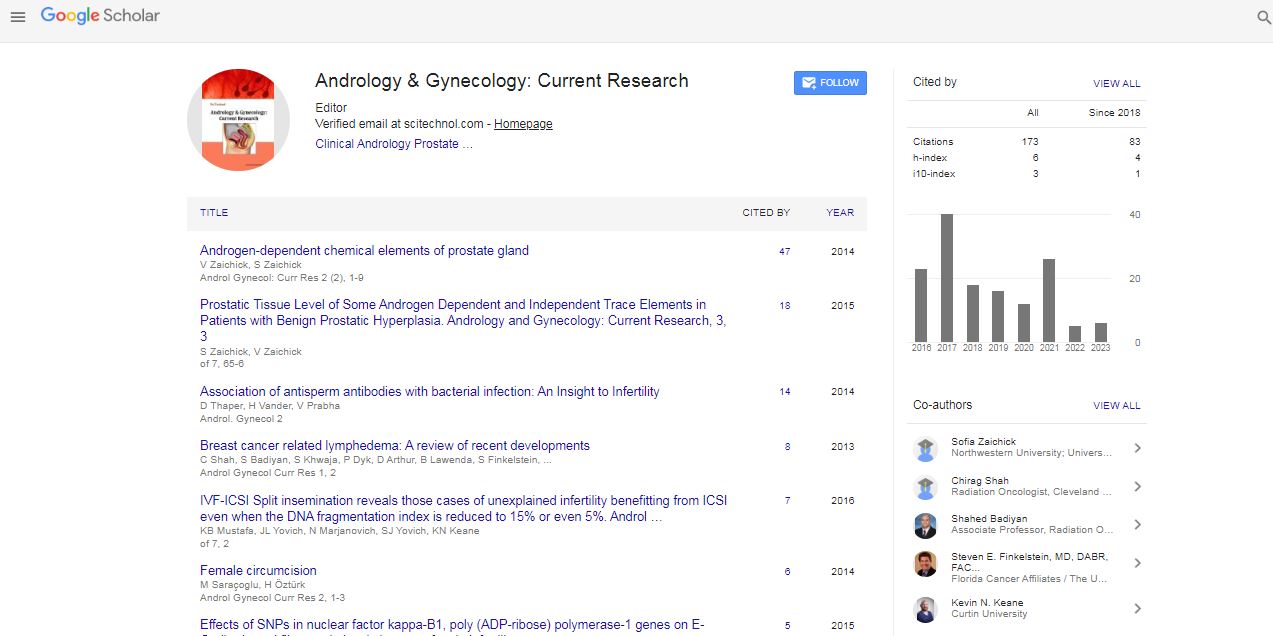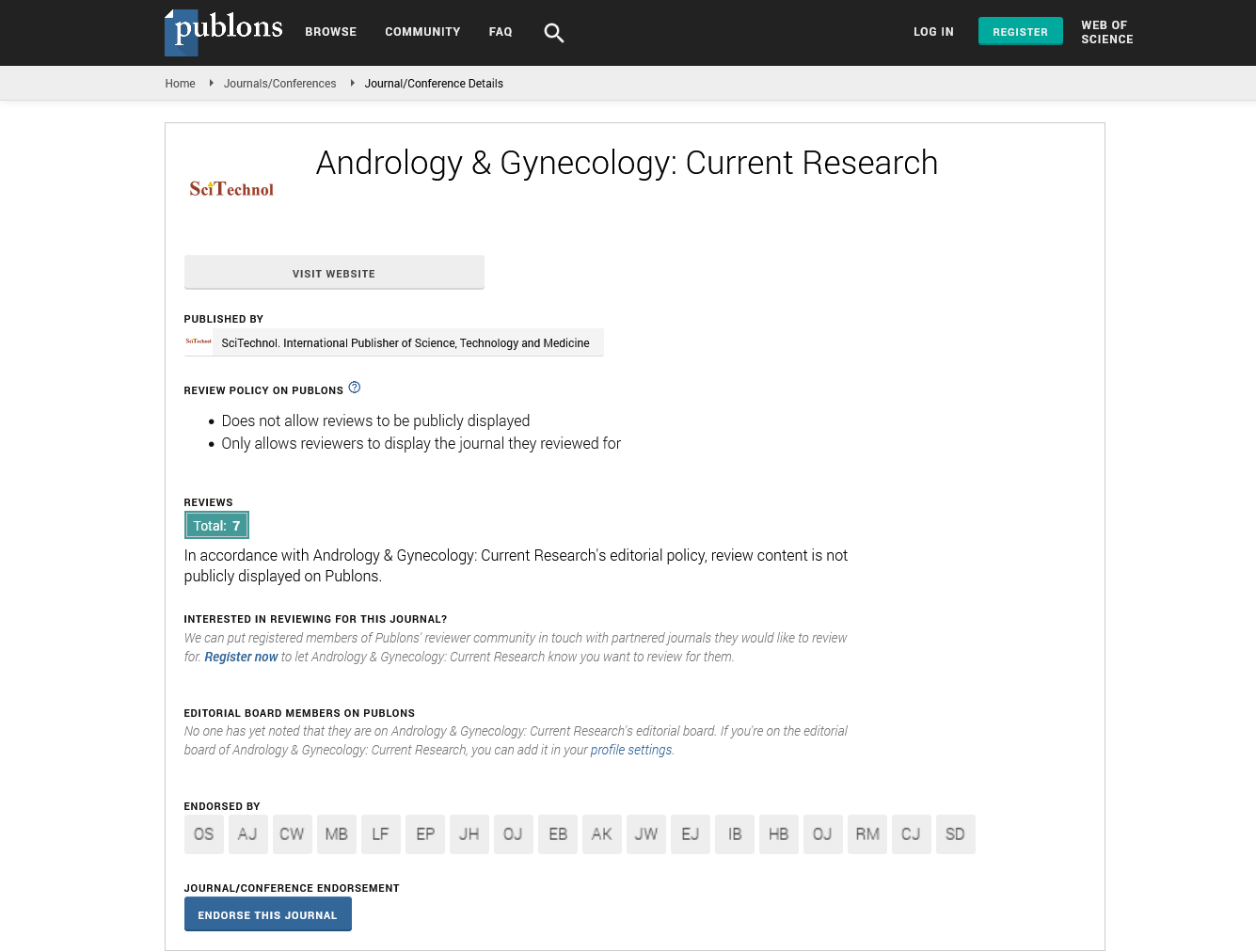iKnife – Improving fertility preservation techniques in cervical cancer patients
Menelaos Tzafetas
Imperial College London, UK
: Androl Gynecol: Curr Res
Abstract
Cervical cancer is the fourth most common female cancer worldwide. It is caused by a persistent infection of oncogenic human papilloma virus (HPV) and the invasive cancer develops during 10 to 15 years, progressing through detectable and treatable precancerous lesions, cervical intraepithelial neoplasia’s (CIN). Cervical screening programmed in the developed world have a significant impact on the reduction in the number of cases through identification and treatment of CIN. Precancerous lesions detected through abnormal cytological screening results can be difficult to manage and often require repeat visits, further diagnostic punch biopsies with increased patient anxiety, risk of non-compliance and overload of services. Both CIN and cervical cancer are common amongst young women to whom future fertility and reproductive wishes are very important. Local excision of CIN and early invasive cervical cancer is highly effective particularly if the excisional margins are clear. However, in women in reproductive age an important aim is to remove the minimal amount of healthy tissue to conserve maximal cervical length for future pregnancy, because excisional treatment has been associated with preterm birth and second trimester miscarriage, along with increased risk of neonatal mortality and morbidity. This can present a challenge for the surgeon when weighing up future oncological and obstetric outcomes. Current diagnostic techniques are slow, technically demanding and require highly-skilled personnel to carry out the analysis of cytological and histological specimens. Positive margins may be found in 23% of excisional specimens for treatment of CIN and up to 33% of cases of trachelectomy for cervical cancer (4). There is a need for a rapid, consistent method of near-patient tissue identification for use in the colposcopy and gynecology theatre to improve patient satisfaction and to enable the clinician to ensure maximum disease clearance with removal of the smallest amount of tissue to reduce the impact on future reproductive outcomes. Rapid Evaporative Ionization Mass Spectrometry (REIMS - iKnife) is an ambient ionization technique using electrosurgerygenerated aerosols, which are analyzed by time-of-flight mass spectrometry (TOF MS) to provide tissue identification. The spectra can be generated directly from tissue surfaces, without any need for sample preparation, presenting the possibility for this technology to give an intra-operative diagnosis.
Biography
Menelaos Tzafetas graduated from the Medical School of University of Thessaly in Greece. He then completed his military service as a General Practitioner in the Greek Armed Forces. Following that he moved to the United Kingdom where he commenced his specialty training in Obstetrics and Gynaecology. His current research project is investigating the use of new innovative spectroscopy technologies like the iKnife and DESI and their potential to improve the management of women with abnormalities in cervical screening.
E-mail: e: m.tzafetas@imperial.ac.uk
 Spanish
Spanish  Chinese
Chinese  Russian
Russian  German
German  French
French  Japanese
Japanese  Portuguese
Portuguese  Hindi
Hindi 


